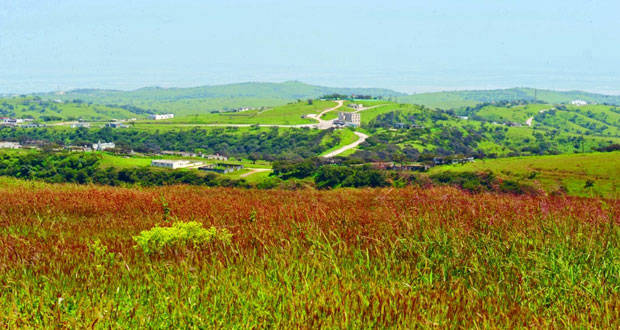Baobab Trees in Salalah are among the rarest and most fascinating natural attractions in Oman. Known for their massive trunks and mystical appearance, these trees are centuries old and hold both ecological and cultural significance. For travelers from Europe looking for something extraordinary beyond beaches and mountains, a visit to the Baobab trees in Dhofar is a must. With Ciao Salalah Tours, exploring these natural giants becomes an unforgettable journey filled with history, adventure, and scenic landscapes.
The Mystery of the Baobab Trees
Baobab trees are often called the “upside-down trees” because of their unusual shape: massive trunks with branches that resemble roots reaching into the sky. In Salalah, they stand as silent witnesses of time, believed to be hundreds of years old.
Unlike any other trees in the region, Baobabs can store thousands of liters of water inside their trunks, which is why they thrive even in dry conditions. Their presence in Dhofar adds a magical, almost prehistoric charm to the landscape.
Why Baobab Trees Attract European Tourists
For European travelers who are used to green forests or Alpine landscapes, the Baobab trees offer something exotic and completely different. They represent:
- Unique Photography Opportunities: The bizarre shapes of Baobabs are perfect for Instagram-worthy shots.
- Cultural Curiosity: Locals often associate the trees with legends and folklore, which fascinate history lovers.
- Eco-Tourism Appeal: As symbols of sustainability and resilience, Baobabs attract eco-conscious travelers from Europe.
Activities Around the Baobab Trees
Guided Nature Walks
With Ciao Salalah Tours, visitors can enjoy guided walks around the Baobab clusters, learning about their biology, survival techniques, and cultural significance.
Photography Sessions
From sunrise to sunset, the Baobabs look spectacular under changing light conditions. Professional and amateur photographers alike will enjoy capturing their timeless beauty.
Picnic and Relaxation
The area around the Baobabs offers a serene environment where visitors can relax, enjoy the fresh air, and connect with nature far from the city’s hustle.
Best Time to Visit
- October to April: Cooler months are ideal for European tourists, offering pleasant weather.
- Khareef Season (Monsoon): From June to September, the surrounding Dhofar region turns green, making the Baobabs even more enchanting against the lush backdrop.
Visiting with Ciao Salalah Tours
Ciao Salalah Tours makes visiting the Baobab trees an enriching and comfortable experience. Their expert guides provide insights into the history of the trees, legends told by locals, and the role these giants play in the ecosystem.
Why choose Ciao Salalah Tours?
- Tailored tours for European tourists with multilingual guides.
- Safe and comfortable transportation.
- Options to combine the Baobab visit with nearby attractions like the Frankincense Trail or mountain viewpoints.
- Personalized itineraries for couples, families, and groups.
Travel Tips
- Bring a Camera: The Baobabs are truly photogenic.
- Comfortable Shoes: For walking around uneven terrain.
- Respect Nature: Avoid carving or damaging the trees.
- Plan a Half-Day Trip: Baobab trees are usually part of a scenic countryside itinerary.
Why You Shouldn’t Miss the Baobab Trees
Visiting the Baobab Trees in Salalah is not just about seeing rare plants—it’s about experiencing the blend of nature, history, and culture that makes Dhofar so unique. For European travelers seeking authentic and exotic encounters, these trees provide a story worth remembering. With Ciao Salalah Tours, your visit will be smooth, educational, and full of memorable moments.
FAQ – Baobab Trees in Salalah
Q1: Where can I find the Baobab Trees in Salalah?
A: They are located in Dhofar’s countryside, often included in eco-tour itineraries offered by Ciao Salalah Tours.
Q2: Are Baobab Trees native to Oman?
A: While more common in Africa and Madagascar, the Baobabs in Salalah are rare and unique, making them a special attraction for Oman.
Q3: What is the best time for European tourists to visit?
A: From October to April, when the weather is cooler and ideal for outdoor exploration.
Q4: Are the Baobab Trees family-friendly to visit?
A: Yes, the area is safe for families, and children often enjoy the unusual appearance of the trees.
Q5: Can I combine the Baobab visit with other attractions?
A: Absolutely. Ciao Salalah Tours often pairs the Baobab trees with mountain viewpoints, beaches, or cultural heritage sites.
Conclusion
The Baobab Trees in Salalah are natural monuments of resilience and beauty. For European tourists, they offer a once-in-a-lifetime opportunity to witness something rare, mysterious, and deeply inspiring. Whether you are a nature enthusiast, photographer, or simply a curious traveler, exploring these giants with Ciao Salalah Tours ensures a memorable and enriching adventure in Oman.



